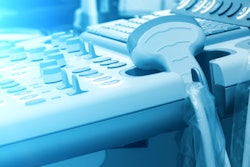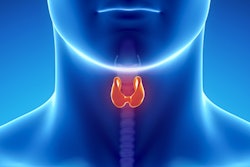
Teleultrasound can be helpful in emergency pediatric health situations, especially at remote healthcare facilities, according to a study published August 30 in Ultrasound in Medicine and Biology.
A team led by Baptiste Morel, PhD, from Clocheville Hospital in Tours found that a 3D virtual teleultrasound system for pediatric abdominal imaging yielded "good to excellent" image quality in most cases and is overall comparable to standard ultrasound.
"Teleultrasonography could provide an effective solution to difficulties that arise from limited medical resources in distant hospitals without a pediatric radiologist in the context of an emergency," Morel et al wrote.
Telemedicine has seen a spike in use in recent years, with the COVID-19 pandemic creating a need to acquire images in one location and have them interpreted in another. In radiology, cross-sectional imaging and x-ray imaging have been early beneficiaries of telemedicine.
Ultrasound has also been proposed for use in this telehealth boom, with researchers saying it could help in areas with limited onsite radiology resources, including emergency departments. While ultrasound is the first line of imaging for diagnosing abdominal problems in children, pediatric radiologists are not always available on site, especially during on-call duty.
Therefore, the Morel team wanted to ascertain the feasibility of a pediatric teleultrasonography service between two distant hospital centers, using the Smart Sensor 3D device (Canon Medical Systems). They also wanted to compare diagnoses made over teleultrasound links with standard abdominal ultrasound acquisition.
The researchers looked at prospective data from 103 children who presented with abdominal pain. Each teleultrasound was blindly reviewed by two radiologists, one being a resident and the other being a senior radiologist. Ultrasound findings were normal in 66 cases, abnormal in 36 cases, and inconclusive in one case.
The senior radiologist considered 84.6% of the total images good or excellent quality, while the resident reported the same for 70% of the images.
| Radiologist performance for interpreting pediatric abdominal teleultrasound | ||
| Resident | Senior radiologist | |
| Sensitivity | 84% | 86% |
| Specificity | 92% | 95% |
| Positive predictive value | 86% | 92% |
| Negative predictive value | 91% | 92% |
The researchers also looked at Cohen's k coefficients of diagnoses from standard and teleultrasound and found high agreement between the two. They found a coefficient of 0.82 for standard ultrasound and 0.71 for teleultrasound, respectively. Additionally, they found an interrater coefficient of 0.84.
Also, the intraclass correlation coefficient was 0.99 between the standard abdominal examination and 3D teleultrasound reformatted images for quantitative variables on pathological cases.
Morel and colleagues wrote that teleultrasound has several advantages. One is that children, parents, and operators "easily" agreed to participate in the study. They suggested that the method's simplicity led to the acceptance of 3D image acquisitions, which took "only a few minutes."
However, the researchers acknowledged that there is a learning curve to the method and that teleultrasound's technical weaknesses are similar to standard ultrasound. These include bowel gas, poor exploration due high body mass index, and severe movement artifacts during 3D acquisition.
"As in other teleultrasound methods, we miss the clinical contact with the children, and we were unable to be guided by the pain or reaction of the children during the ultrasound exploration," the study authors wrote. "However, we had access to the clinical information on the main symptoms and the localization of the pain."
Still, the team suggested that the teleultrasound approach could help improve access to diagnostic imaging and making clinical decisions. This includes minimizing referral for care in expert centers or reducing delays in transferring patients to emergency rooms in cases of severe conditions.




















